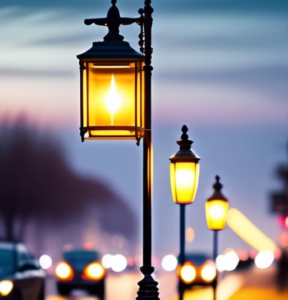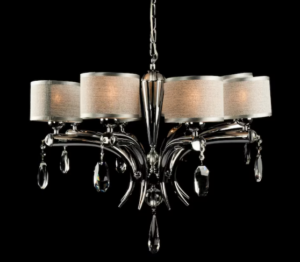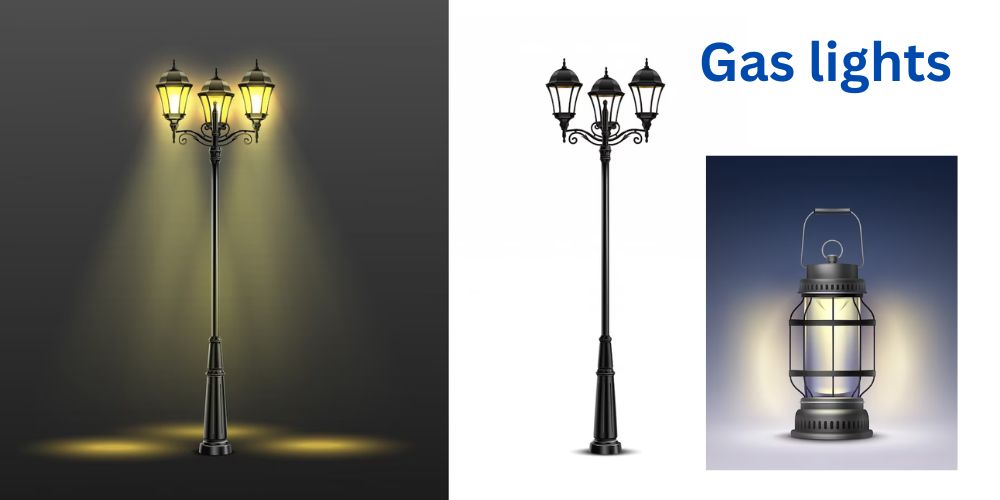Introduction:
Gas lights, once the primary source of illumination, have a diverse range of styles and designs that have evolved over the years. From historical street lamps to modern decorative fixtures, gas lights continue to captivate us with their timeless charm. In this blog, we explore the various types of gas lights available, each with its unique characteristics and applications.
Histroy :
The concept of gas lighting dates back to the 17th century when Sir William Murdoch first demonstrated gas lighting in his Cornwall home in 1792. However, it wasn’t until the early 19th century that gas lights started gaining popularity in urban areas, transforming the nocturnal landscape and revolutionizing the way people lived and worked after dark.
Gas Street Lamps:

Gas street lamps, also known as gas lanterns, were the pioneers of gas lighting and a common sight in cities during the 19th century. They typically featured ornate iron or copper structures with a glass globe to protect the flame. Gas-street lamps provided an elegant and functional solution for illuminating roads, public spaces, and pathways, creating a welcoming ambiance after dark.
Also Read kitchen remodel ideas
Gas Wall Sconces:

Gas wall sconces were popular in the Victorian era and were commonly used to light hallways, corridors, and interior spaces. Gas-Wall Sconces crafted in various styles, from simple and understated designs to elaborate, decorative fixtures. Gas-wall sconces added a touch of sophistication and charm to interior spaces, enhancing the overall aesthetics.
Gas Post Lights:

Gas post lights, also known as gas lampposts or gas pole lights, were commonly used to illuminate residential streets and public squares. These tall fixtures featured a lamp head at the top of a sturdy pole, providing a bright and widespread illumination for large outdoor areas.
Gas Chandeliers:

Gas chandeliers were opulent fixtures that adorned the grand interiors of palaces, mansions, and luxury hotels during the 19th century. They featured multiple arms with gas flames and often incorporated intricate crystal or glass embellishments. Though electric lighting replaced them in most cases, gas chandeliers remain symbols of elegance and luxury in historical settings.
Gas Torches:

Gas torches, also known as gas tiki torches, are popular for outdoor gatherings and parties. Gas-Torches are typically mounted on a post or attached to a wall and use propane or natural gas to produce a flickering flame. Gas-torches create a warm and inviting ambiance, making them perfect for outdoor entertainment spaces.
Gas Lamps for Gardens and Pathways:

Gas lamps designed for gardens and pathways come in a variety of styles, from classic lantern shapes to contemporary designs. They provide functional lighting while adding a nostalgic touch to outdoor spaces. These gas lights often feature intricate metalwork and ornamental details, blending seamlessly with the natural surroundings.
Gas Fire Pits and Fire Bowls:
Gas fire pits and fire bowls provide warmth and a cozy atmosphere for outdoor gatherings. They use propane or natural gas to fuel the flames, eliminating the need for firewood. Gas-fire pits are available in various shapes and sizes, making them a popular choice for outdoor seating areas and patios.
Gas Wall Torches and Sconces:
Gas wall torches and sconces are smaller versions of gas torches designed for mounting on walls. They add a decorative and functional element to outdoor walls and facades, creating a captivating focal point.
Pros and Cons of Gas Lights
Gas lights have a unique charm and ambiance, but they also come with certain advantages and disadvantages. Let’s explore the pros and cons of using gas lights:
Pros:
Nostalgic Ambiance:
Gas lights offer a warm and nostalgic glow, evoking a sense of history and elegance, making them perfect for heritage properties and traditional settings.
Elegant Design:
Gas lights often feature intricate metalwork and ornamental details, adding a touch of sophistication to both interior and exterior spaces.
Outdoor Illumination:
Gas lights are an excellent choice for outdoor spaces, such as gardens, pathways, and patios, as they create an inviting atmosphere and enhance the outdoor experience.
No Electricity Required:
Gas lights operate independently of electricity, making them suitable for areas with limited or unreliable electrical supply.
Less Light Pollution:
Gas lights provide a soft, warm glow that is less likely to contribute to light pollution compared to some bright electric lighting fixtures.
Environmentally Friendly Fuel Options:
Natural gas and propane, common fuels for gas lights, are cleaner-burning and emit fewer greenhouse gases compared to coal gas historically used.
Backup Lighting Option:
In case of power outages, gas lights can still provide illumination, ensuring continued functionality during emergencies.
Cons:
Higher Maintenance:
Gas lights require regular maintenance to ensure safe and optimal performance, which may involve cleaning, inspection, and occasional repairs.
Safety Concerns:
Improper installation or maintenance can lead to gas leaks, posing safety hazards. It is crucial to have a professional handle installation and maintenance.
Limited Light Control:
Gas lights offer limited control over the intensity of light, unlike electric lights, which can be dimmed or adjusted as needed.
Fuel Cost and Supply:
Operating gas lights requires a steady supply of fuel (natural gas or propane), which can incur additional costs and the need for periodic refilling or tank replacement.
Lower Energy Efficiency:
Gas lights may be less energy-efficient compared to modern electric lighting options, as some energy is lost in the combustion process.
Limited Designs and Options:
Compared to the vast array of electric lighting fixtures available, gas lights may have more limited design options and customization choices.
Flame Vulnerability:
Gas flames are susceptible to wind and weather conditions, which can affect the stability and consistency of the illumination.
Also Read :- collage picture frames
Conclusion:
Gas lights encompass a wide array of styles and applications, ranging from historical street lamps to modern decorative fixtures. Whether used for historical preservation or to enhance the ambiance of contemporary spaces, gas lights continue to be cherished for their timeless charm and warm glow. Their enduring appeal ensures that gas lights remain an integral part of our lighting choices, offering a blend of tradition and elegance in the modern world.
Frequently Asked Questions (FAQ) – Gas Lights
What are gas lights, and how do they work?
Gas lights are lighting fixtures that use combustible gas, such as natural gas or propane, to produce a steady flame for illumination. The gas is ignited inside the fixture, creating a warm and flickering light.
Are gas lights still used today?
While electric lighting is more common, gas lights are still used today, especially for decorative and nostalgic purposes in outdoor spaces, historical preservation projects, and luxury settings.
What are the advantages of using gas lights?
Gas lights offer a unique and nostalgic ambiance that electric lights may not replicate. They create a warm and welcoming atmosphere, making them ideal for outdoor entertaining areas and heritage properties.
Are gas lights safe to use?
When properly installed and maintained, gas lights are safe to use. However, it’s essential to have a qualified professional handle the installation and regular maintenance to ensure proper functioning and safety.
What type of gas is used in gas lights?
Gas lights typically use natural gas or propane as fuel. In the past, coal gas was commonly used, but natural gas has become the preferred choice in modern applications.
Can gas lights be converted to electric lights?
In some cases, gas light fixtures can be converted to electric lights by removing the gas components and installing electric bulbs. However, this process may vary depending on the specific fixture and its design.
Do gas lights require a constant supply of gas?
Gas lights require a continuous supply of gas to maintain the flame. For propane gas lights, a propane tank must be refilled or replaced periodically. Natural gas lights are connected to the home’s gas supply.
Are gas lights energy-efficient?
Gas lights are generally less energy-efficient than electric lights, as some energy is lost in the combustion process. However, they can still be more efficient than traditional open-flame torches or fire pits.
How do I clean and maintain gas lights?
Regular maintenance is essential for gas lights. Keep the fixtures clean from dirt and debris, and have a professional inspect and clean the gas lines and burners regularly to ensure proper functioning and safety.
Where can I find gas lights for purchase?
Gas lights can be found at specialty lighting stores, online retailers, or through manufacturers that specialize in gas lighting fixtures. Additionally, some antique or vintage stores may offer restored gas lights for sale.
Remember to always follow the manufacturer’s instructions and safety guidelines when using gas lights to ensure a safe and enjoyable lighting experience.







































